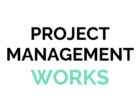Many large organisations will have a standard template for a Business Requirements Document but just because the format has been around for a long time doesn’t mean it is perfect. And for those of you who work in small companies – maybe embarking on a first major project – here are my top tips for what to include in your Business Requirements Document.
But what makes a perfect business requirements document I hear you cry? It is a document that, quite simply, ensures your project is a success; that it meets the needs of the end-users and delivers on-time and on-budget. Get the Business Requirements Document right and it will create a solid foundation for the rest of the project. All of the following sections should be included when putting the document together – most projects will require many more sections but this core of ten elements is a great place to start. I will cover some of the more detailed areas like functional requirements in my next post.
1. Business Problem Statement
A clear definition of what needs to be solved or improved – when deciding whether to include or exclude new features, functions or processes in the project, this should be the statement that you always refer to in the decision-making process.
2. Current Business Process
How does the business currently work – what is good as well as bad about the current processes. And what parts of the product or process fail to deliver what the business needs. This typically will include reporting features.
3. Scope and Limitations
It is vital to avoid scope creep, which is a major factor in project failure, so clearly documenting what is both in-scope and out-of-scope avoids any uncertainty once the project is underway.
But it is also important to distinguish what cannot be changed or improved by the implementation of this project. Defining the limitations sets realistic expectations of the end-users. These are not the out-of-scope items (which could perhaps be implemented with a different budget or timescale or within a different project) but are areas that cannot be altered, for example due to regulatory requirements or software packages.
4. Key Business Objectives
What does the business wish to achieve with this project – this is not the same as what features, functions, processes does the business wish to have in place but what is the ultimate business objective.
5. Project Completion Criteria
This should be a list of items that all parties involved in the project have agreed upon and approved, by which the project is deemed to have been completed successfully.
6. Risks
Every project has its risks and it is important to acknowledge them at an early stage to allow for contingency plans to be put in place.
7. Assumptions
Often difficult to elicit from the business users as they are not specifically considered on a day-to-day basis, but thorough interviewing and analysis techniques should assist in making this list as full and complete as possible.
8. New/Modified Business Process
It is important that the end-users know from the outset how their current business processes will change. It could be a simple enhancement to the existing process or a completely new way of working. Either way, it is desirable to document this at an early stage in the project as this can assist in highlighting potential problem areas and the need for any training.
9. Training
Most major projects will require some form of training for the end-users to ensure they are comfortable with the new process, new report capabilities and requirements, new software or new products. Training sessions are also a good place to promote the advantages of the changes to those at the “coal-face”.
10. Quality Checklist
A defined list of ways to measure the quality of the final product or process will assist in determining whether the key business objective has been met.
Writing a Business Requirements Document is a vital element to overall project success, which is why it is important to learn the most effective ways of doing so. Techniques to help you are covered on both general project management courses and on specific business requirements courses, which you can take online if you don’t have time to attend a classroom-based course.




Pingback: The Importance of a Flexible Project Schedule for Successful Outcomes